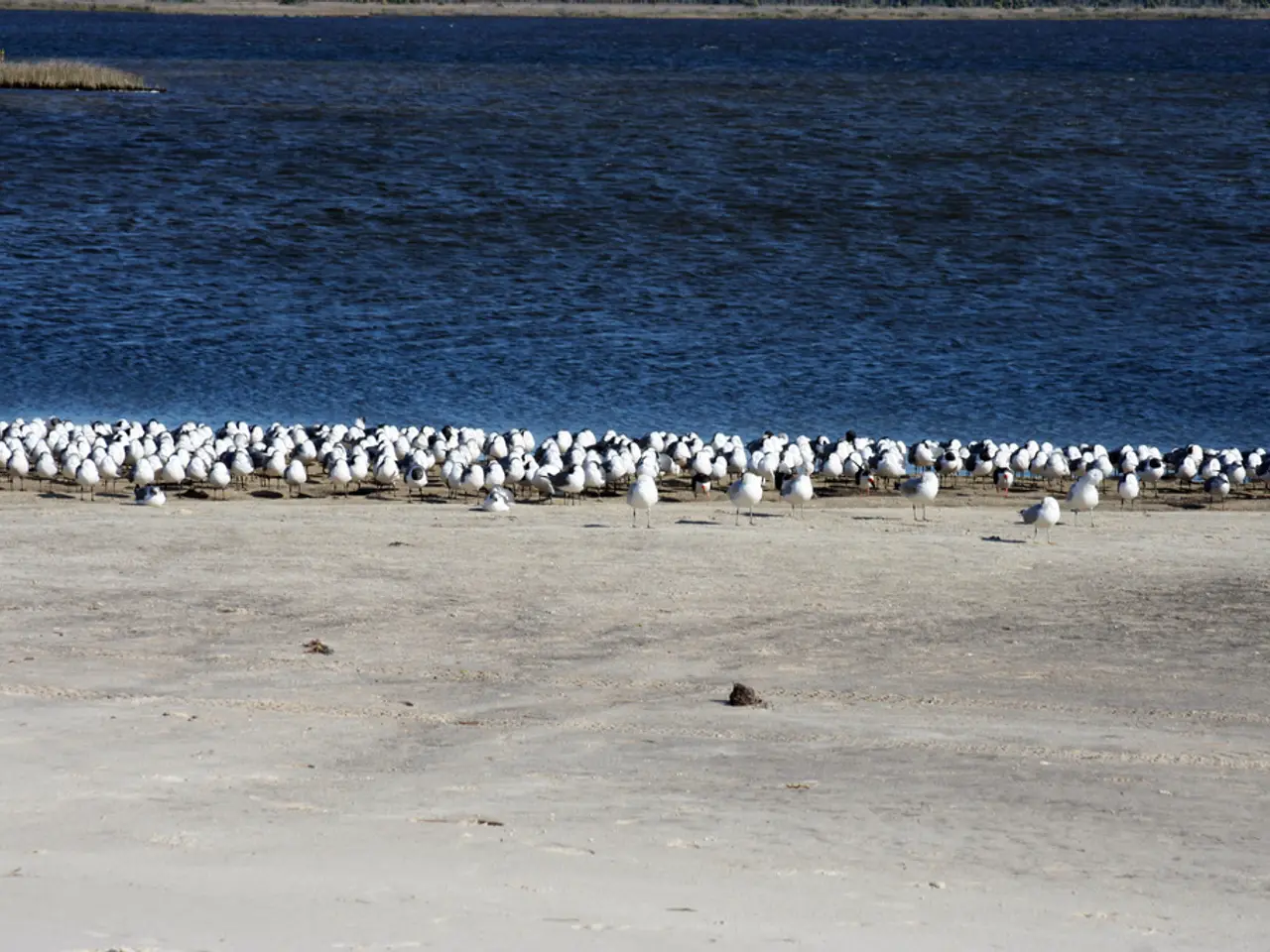Beach researchers from Scripps Oceanography introduce a user-friendly warning system for swimmers about contamination issues.
A new predictive tool, the Pathogen Forecast Model, developed by researchers at UC San Diego’s Scripps Institution of Oceanography, is set to revolutionize beachgoers' decisions and public health in the San Diego-Tijuana region. The model forecasts sewage contamination levels and associated illness risks at beaches from Coronado to Playas de Tijuana, up to five days into the future.
Development
The model was built on earlier research led by oceanographers Falk Feddersen and Sarah Giddings, who studied pollution transport in this coastal region for years. Notable experiments included dye tracing in 2015, revealing how nearshore currents carry pollutants. By 2021, the team developed a coastal ocean pathogen and human-illness model incorporating sewage sources such as the Tijuana River and the San Antonio de los Buenos treatment plant. The current Pathogen Forecast Model integrates data on winds, tides, offshore currents, waves, and river flow to estimate sewage transport and health risk. Its accuracy is supported by correlation with San Diego County’s water quality measurements, showing a significant correlation (0.54) up to five days ahead, though the model remains experimental.
Features and Usage
Hosted by the Southern California Coastal Ocean Observing System (SCCOOS) at Scripps, the model’s user-friendly website displays sewage contamination forecasts for Playas Tijuana, Imperial Beach, Silver Strand State Park, and Coronado. It alerts beachgoers to contamination levels and illness risk, aiming especially to protect families and swimmers. Although promising, the model does not replace official county water quality monitoring and beach closure decisions, which remain based on bacteria testing by health authorities.
Future Improvements and Expansion
The project received additional funding through the 2026 Commerce Justice Science and Related Agencies Appropriations bill to enhance the forecasting tool and broaden its capabilities. Researchers note the model is still experimental and subject to errors akin to weather forecasts. Future improvements aim to refine forecasting skill, incorporate additional data sources, and possibly extend the model’s geographic coverage. There is also concern about airborne transport of pathogens and chemicals from sewage, a potential direction for future research and health risk forecasting.
In summary, the Pathogen Forecast Model is the first of its kind in the region and nationally to predict coastal ocean sewage contamination and health risk several days in advance from Coronado to Playas de Tijuana. It is a vital experimental tool combining oceanographic and environmental data to assist public health decisions and community awareness, with ongoing efforts to improve its accuracy and scope.
[1] Feddersen, F., Giddings, S., Bowman, J., Barton, A., Send, U., Cornuelle, B., Gopalakrishnan, G., & Anderson, C. (2021). A coastal ocean pathogen and human-illness model for the San Diego-Tijuana border region. Journal of Marine Systems, 223, 105186.
[2] UC San Diego News Center. (2022, February 1). New seawater quality forecast model aims to protect public health along the San Diego-Tijuana border. Retrieved from https://ucsdnews.ucsd.edu/pressrelease/new-seawater-quality-forecast-model-aims-to-protect-public-health-along-the-san-diego-tijuana-border
[3] SCCOOS. (n.d.). Pathogen Forecast Model. Retrieved from https://sccoos.ucsd.edu/projects/pathogen-forecast-model/
[4] SCCOOS. (n.d.). Pathogen Forecast Model Data. Retrieved from https://sccoos.ucsd.edu/projects/pathogen-forecast-model/data/
[5] UC San Diego News Center. (2022, February 2). Pathogen Forecast Model receives funding to improve coastal water quality predictions. Retrieved from https://ucsdnews.ucsd.edu/pressrelease/pathogen-forecast-model-receives-funding-to-improve-coastal-water-quality-predictions
- The Pathogen Forecast Model's development was based on years of oceanographic research by Falk Feddersen and Sarah Giddings.
- In 2021, the research team created a coastal ocean pathogen and human-illness model.
- The Model incorporates sewage sources like the Tijuana River and the San Antonio de los Buenos treatment plant.
- The Model's accuracy is supported by its correlation with San Diego County’s water quality measurements.
- The Model forecasts sewage contamination levels and associated illness risks at beaches for up to five days into the future.
- The Model is user-friendly, displaying sewage contamination forecasts for several beaches.
- The Model's primary goal is to protect families and swimmers.
- While promising, the Model does not replace official county water quality monitoring and beach closure decisions.
- Additional funding will be used to enhance the forecasting tool and broaden its capabilities.
- Researchers aim to refine forecasting skill, incorporate additional data sources, and possibly extend the Model’s geographic coverage.
- There is concern about airborne transport of pathogens and chemicals from sewage, a potential direction for future research and health risk forecasting.
- The Model is a vital experimental tool combining oceanographic and environmental data to assist public health decisions and community awareness.
- The Model is the first of its kind in the region and nationally to predict coastal ocean sewage contamination and health risk several days in advance.
- The Model is a significant contribution to the Field of Science and could have potential applications in other regions facing similar issues.
- The Model is an example of how environmental science and health and wellness can work together to improve public safety and quality of life.




